Saigon, summer afternoon. Suddenly craving a bowl of snakehead fish noodle soup from home. In the old days, by the roadside there was a woman sitting with a shoulder pole, one end was a pot of steaming water, the other end was a tray of fish heads, fish intestines plus a bunch of spices, young vegetables and a bunch of white noodles. It was a stall that sold in the afternoon, anyone passing by who wanted a snack (a snack to fill their stomach when hungry), would stop by and order a bowl (the upper bowl is big, the lower part is smaller). This type of "bowl" also carried a very unique culinary philosophy of the villagers of that time: when not yet eaten, at first glance it seemed like a lot to satisfy the eyes, then gradually eat less and less to keep craving.
In the countryside of Quang Tri , that dish is called "bed flap porridge", which is noodles made from tapioca flour, sometimes mixed with a little rice flour, spread out like bed flaps, wrapped around each other in a bowl. The snakehead fish that the children caught in the fields brought to her, still wriggling. She put them in a jar, caught them gradually to make "bed flap porridge" to sell to passersby...
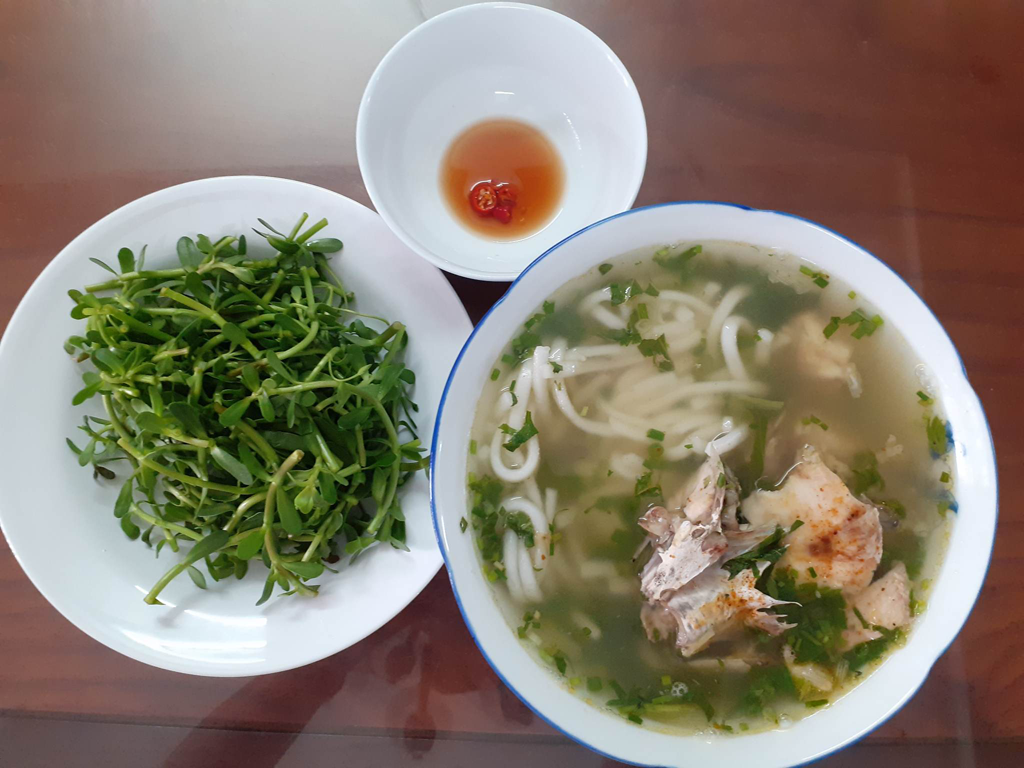
A bowl of noodle soup recalls the taste of hometown cuisine
So I took my bike to the market. The seller said that the snakehead fish had just been brought up from Long An . I bought two medium sized ones (each one about 300g) to take home. I stopped by the vegetable stall to buy some bitter vegetables (instead of young mustard greens, hard to find in Ho Chi Minh City), green chili powder, some onions and coriander. I bought flour at the supermarket the day before (there was no tapioca starch, so I had to use tapioca starch instead). Shallots, a type of tuber related to onions and garlic but smaller, are often grown in the Central region. The day before, my sister sent me a few cans that I had at home.
Bring the snakehead fish home, scale and clean. Cut into thin pieces, wash and drain, put in a pan with a little oil and stir-fry. Peel and crush the shallots, put in to fry quickly with the fish. The shallots will then give off a faint aroma, covering the fishy smell. Add a little salt, chili and a spoonful of prepared fish sauce, and cook for about 1 minute to let it absorb. Then turn off the stove and leave it there.
Spread the dough out on a tray, roll it into a tiny “hill”, then make a small hole in the middle, just like… a volcano. Pour boiling water over it and knead it while rolling it. Knead for about 5-7 minutes until the dough becomes sticky and thick. Pinch each ball, flatten it, slice it and spread it out on the tray, creating smooth white strands. Remember to save some sifted flour so the strands don’t stick together.
The broth pot on the stove next to it was ready to boil. It had also been seasoned to taste. The seasoned part had to be left in the fish pan, otherwise it would be too salty. When it was boiling, pour in the flour, stir with chopsticks to separate the flour. Or you could use a mesh spoon to dip the flour until it was cooked, scoop the flour evenly into the bowls. In the pre-made fish pan, whoever ate the head, whoever ate the tail, whoever ate the intestines, whoever ate the meat, just "divide the work" as you like. Pick up the fish and put them in each bowl, with the flour strands underneath, the fish on top and a few glistening layers of oil and chili powder mixed together. Arrange the bitter vegetables on the plate, don't forget to add a pinch of green onion and cilantro to each bowl of noodle soup. Crush the green or red chili in the small bowl of fish sauce that was already there.
So, I put the bitter herbs into the hot bowl, mixed them and ate. Outside, the summer sun had softened. The afternoon had fallen, it felt like I was sitting under the bamboo hedge, listening to the wind caressing each drop of sweat falling down the bowl of noodles, all washed away...
Source link




![[Photo] Prime Minister Pham Minh Chinh chairs a meeting of the Government Standing Committee to remove obstacles for projects.](https://vphoto.vietnam.vn/thumb/1200x675/vietnam/resource/IMAGE/2025/10/06/1759768638313_dsc-9023-jpg.webp)
![[Photo] Prime Minister Pham Minh Chinh chaired a meeting of the Steering Committee on the arrangement of public service units under ministries, branches and localities.](https://vphoto.vietnam.vn/thumb/1200x675/vietnam/resource/IMAGE/2025/10/06/1759767137532_dsc-8743-jpg.webp)


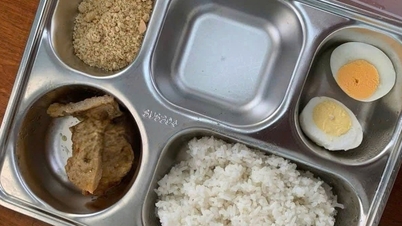
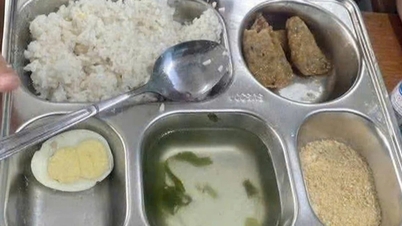







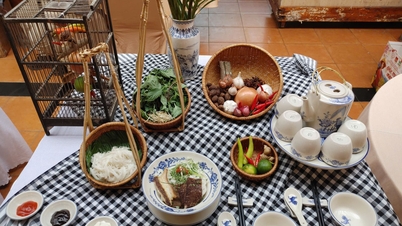


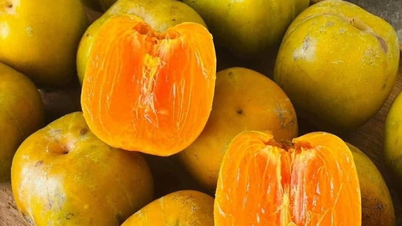
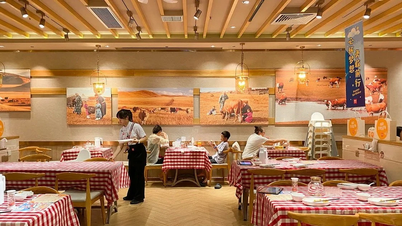































































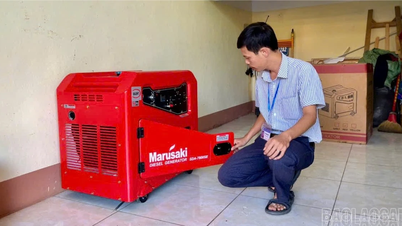

















Comment (0)